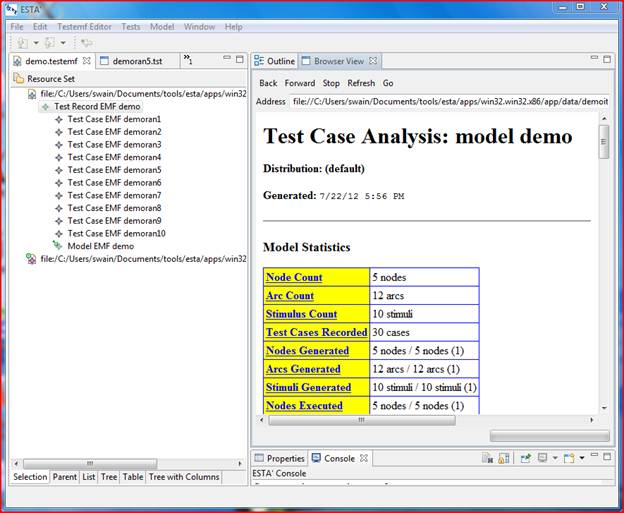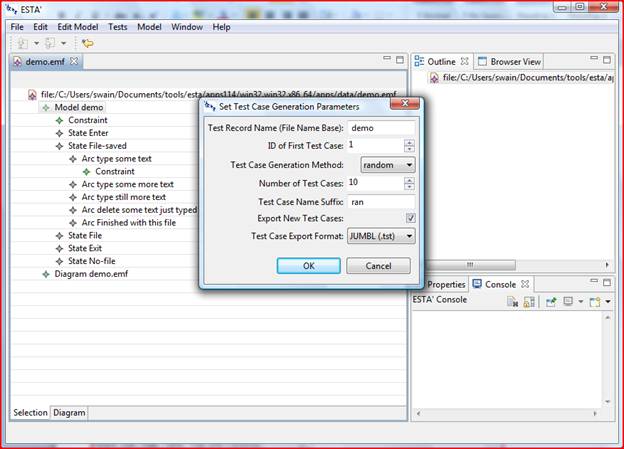
To generate test cases, select Test->Generate. Then specify the test record name, index of first test case, test case generation method, number of test cases, a test case name suffix. If you want to export the generated test cases as text immediately, check the Export New Test Cases box and select the desired format. Then click OK.
If Export New Test Cases is selected, you will be prompted for a directory (JUMBL (.tst) format) or a file name and location (Certify (.seq) format).

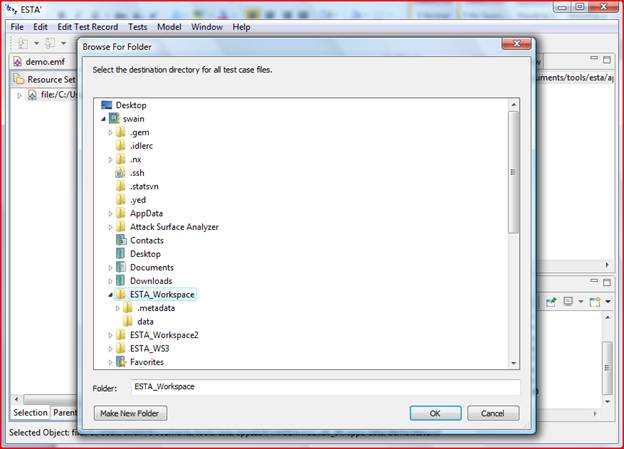
The new test record file, demo.testemf, is automatically loaded and displayed in a tree editor with the parent Ecore resource as the root. The test record object and a link to the associated model are immediate children of the resource object. When the test record is selected, additional test cases can be generated via the Test->Generate menu selection.
Expanding the test record object shows a list of test cases, and each test case can be expanded to show the sequence of events (Figure 9).
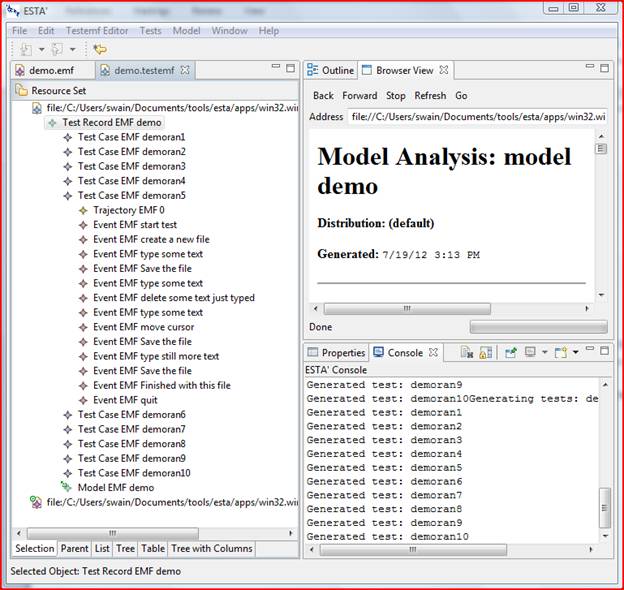
To export all test cases as text files, select the test record object. If you wish to export only selected test cases, use Shift-Click to select a sequential range of cases or use Ctrl-Click to select a non-sequential set of cases.
Next select Test->Export and select the test case format from the combo box in the dialog shown in Figure 10. Then click OK. You will be prompted for a directory (JUMBL (.tst) format) or a file name and location (Certify (.seq) format).
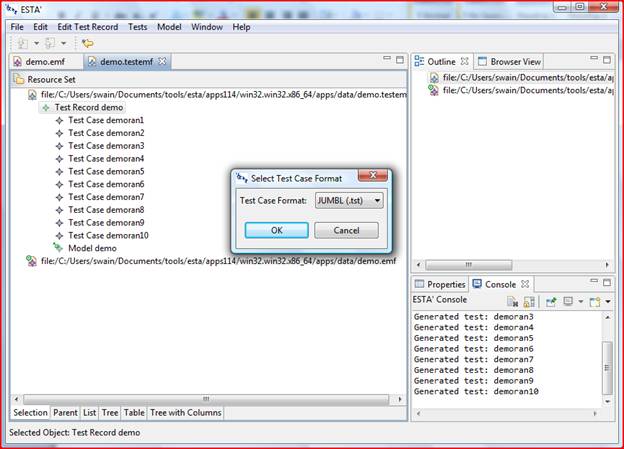
JUMBL format test cases are saved in individual files with the “.tst” extension and can be viewed via File->Open… (Figure 11). Certify format test cases are saved in a single file with the extension “.seq” and displayed immediately in a text editor.
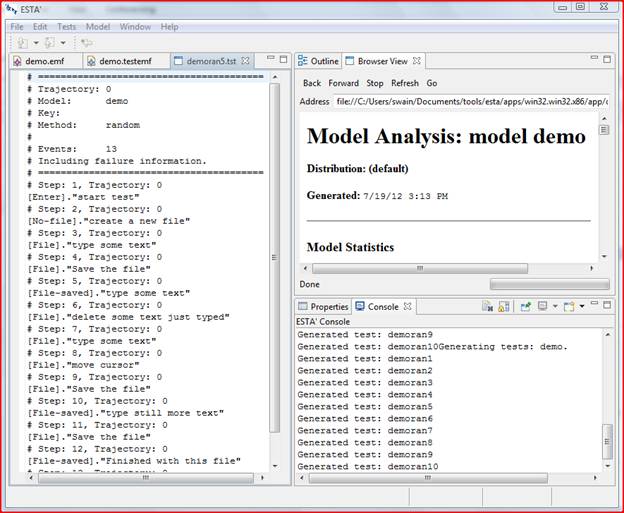
The test case files can be used to guide testing of a target system either manually or as part of a test automation framework. Event (arc) pass/fail information is typically captured in test record files, using either the “selector” or XML results format, described in Section 7 of the JUMBL User Guide. The toolSET_Certify “.fai” format is also supported. As an example, select Test->Record Results, navigate to the install-dir/data folder, and select the file test2.tr to record results captured in the XML results format. Application of this file modifies the test record as follows:
After recording the results via test2.tr, select File->Save to save the test record modifications.
Finally, analyze the test results by first selecting Test->Analyze. Then in the Analysis Parameters dialog (Figure 12)
HTML, TEXT, or CSV report format,Iterative engine is selected,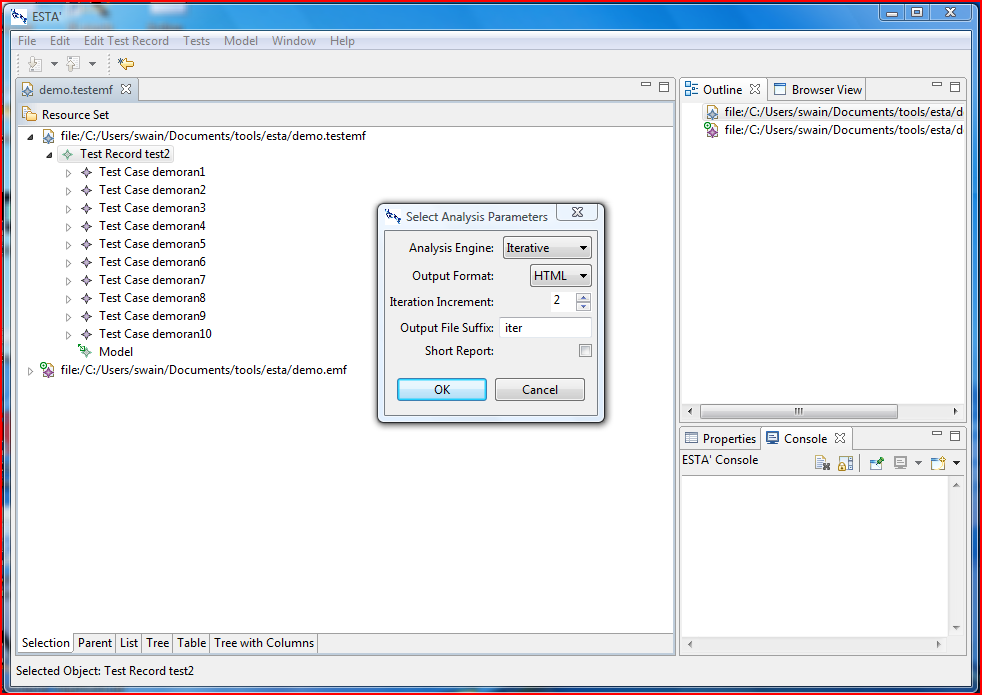
HTML test analysis reports will be generated and displayed in the Browser View tab (Figure 13). TEXT and CSV reports will be displayed in a text editor.
